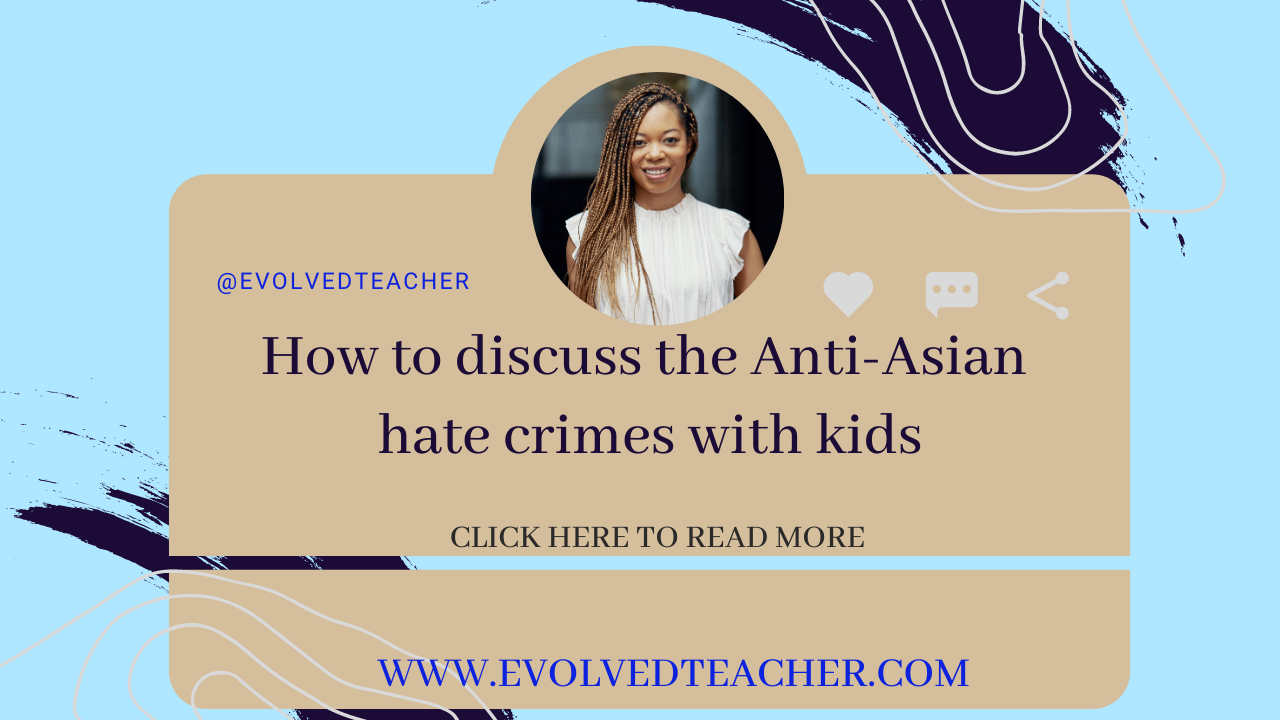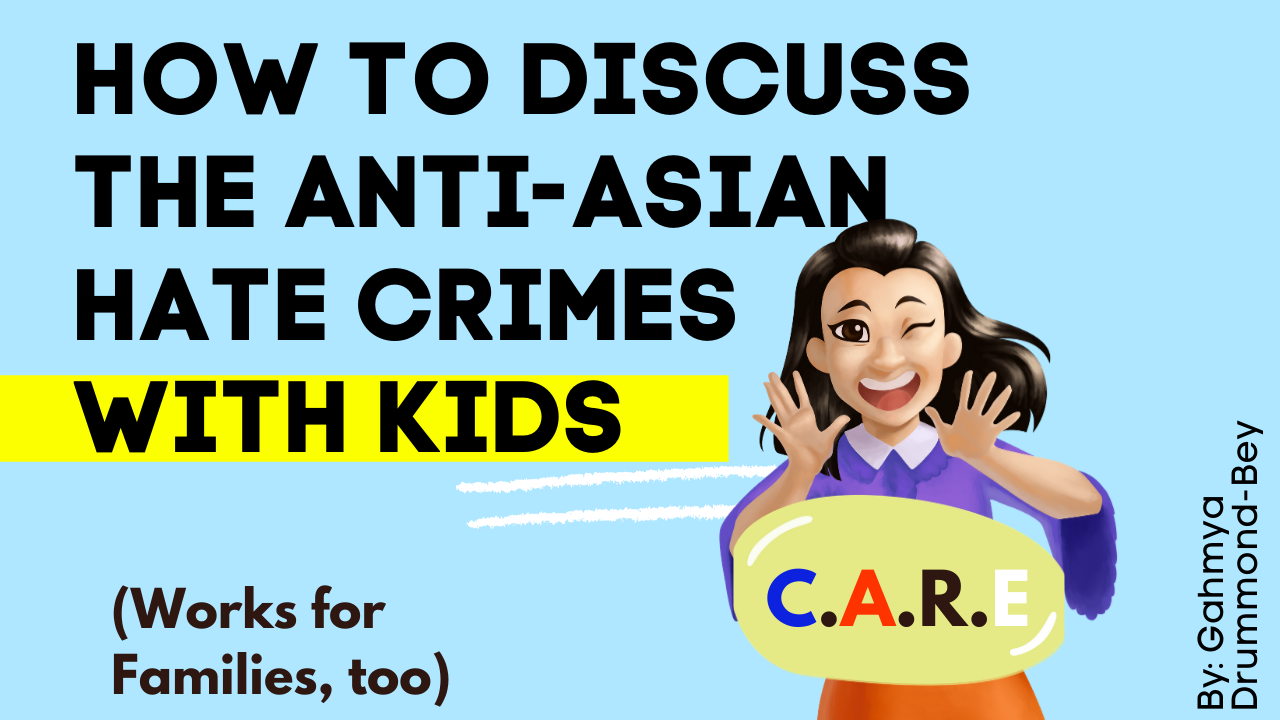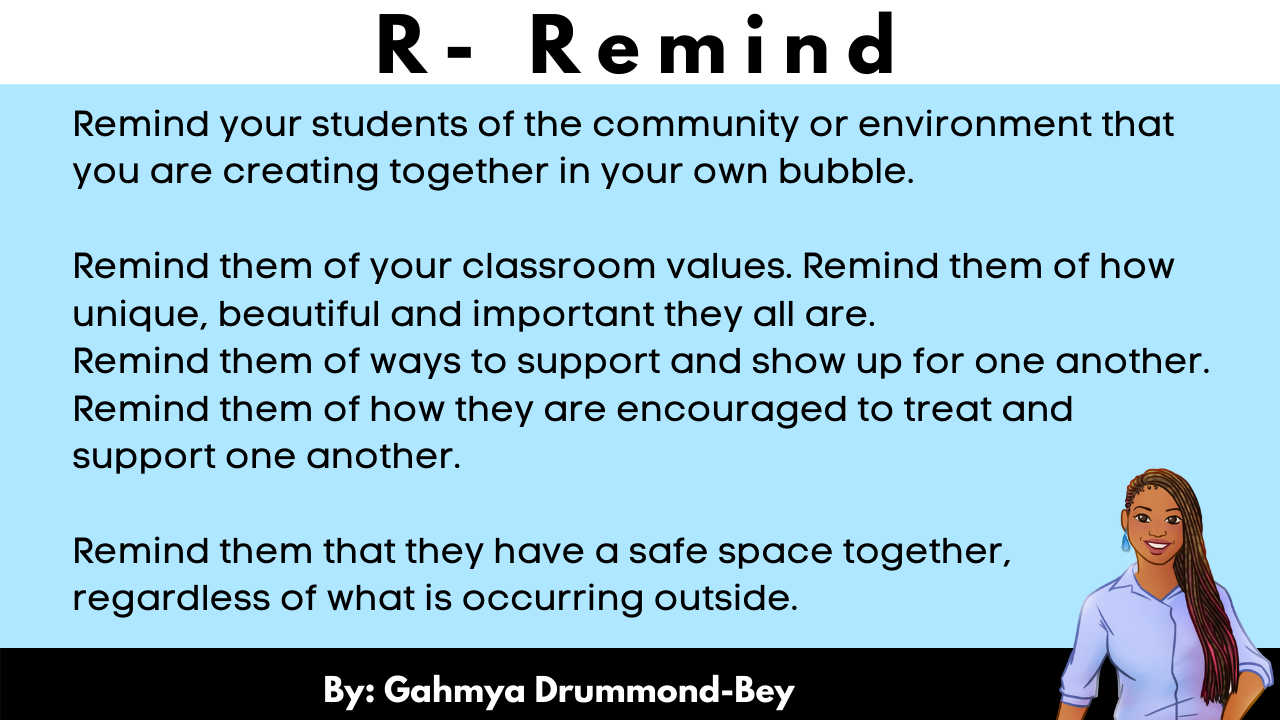How to discuss the Anti-Asian hate crimes with kids


Give your students/children some time to express their own thoughts first, before hearing the opinions or beliefs that others may have.
You can do this by giving them time to journal. Give them the option of writing a letter to themselves as if they are their best friend.
How to begin: Give the facts of what happened.
Define what a "hate crime" is and why this was a hate crime.
From your point of view, how do you feel about what you right now? How do you feel about the world?
What have you heard about this event?
How did that make you feel?
(I also recommend giving them the option to draw or sketch during this experience. Remember, the focus is not how we want them to process things. The focus is on giving them space to process things in a way that is best for them.)

Acknowledge their feelings and give them time to express the feelings that are coming up for them right now, without judgment. This will also help them to begin to develop language needed to express their emotions in the future.
Acknowledge their fears.
Acknowledge and answer their questions. This could be the one space they have an opportunity to truly feel heard or included in a discussion related to what adults have been talking about "around them" rather than "with them."
Show them how important their voices are and give them an opportunity to feel heard and supported.

Feelings Acknowledgement Exercise (In smaller groups)
I always share first and model vulnerability.
"Right now, I feel confused. I feel angry and disappointed that Asian people are being hurt and many people do not feel safe. But, I also feel hopeful because every time I sit here with all of you, I am reminded of how much better the world will be when you lead.
Promises for sharing: (teaches deep listening)
- One person speaks at a time.
- Before another person speaks (This can be a partner or the teacher) another person says, "This is what I heard you say" and offers a summary. If it is correct, the first speaker confirms. If not, the first person has an opportunity to discuss further. Afterward, the new speaker says,
"I honor your feelings."
Honoring another person's feelings means that you honor them as a human to have feelings and emotions, regardless of how you personally feel.
Digitally: You can pair students in break-out rooms. But, I personally prefer to do this as a group depending on the size.

Remind your students of the community or environment that you are creating together in your own bubble.
Remind them of your classroom values. Remind them of how unique, beautiful and important they all are.
Remind them of ways to support and show up for one another.
Remind them of how they are encouraged to treat and support one another.
Remind them that they have a safe space together,
regardless of what is occurring outside.

If there is anything that you do today, try your best to
end your lessons today with empowerment.
Remind your students that they have the voice that will
shape the world in the future.
That they can choose to speak up against any form of hate and that they are allies for anyone treated unfairly.
Encourage them to look at the "issues" that they see in the
world with eyes knowing that they will be the superheroes
to make the true change.
The true changemakers are sitting in your classrooms.
Make sure they know it.

Hey Teachers!
I designed the C.A.R.E. model as a way to approach different conversations with children.
C.A.R.E. utilizes emotional intelligence and is an approach that many of us naturally take as educators because it is embedded in our WHY.
We are C.A.R.E.ful and intentional.
The way we handle what is happening right now has the potential to be embedded in our students' memories forever. Children not only remember when we speak up, but they also remember our silence.
Let's handle them with C.A.R.E.


